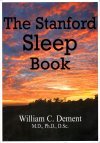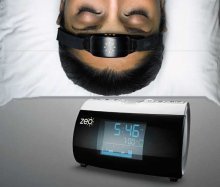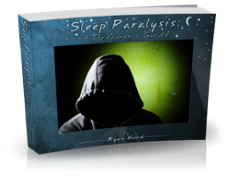
| Connect & Subscribe |
Got Sleep?
An Outreach Project by Tyler Porras, Spring 2010 | Return To All Outreach Projects
In 2007, the National Highway Traffic Safety Administration declared that sleepy drivers were annually responsible for more than 100,000 accidents and at least 1,500 deaths (11).
Investigations of the grounding of the Exxon Valdez oil tanker in 1989, which has been considered one of the most devastating human caused environmental disasters ever to occur in history, have also concluded that sleep deprivation was the leading cause of the event (13). Additionally, it is fairly difficult to forget the tragic explosion in 1986 of the Space Shuttle Challenger, which caused the deaths of its seven crew members (13). In both situations, the people who were in charge of the operations (i.e. the ones who were making critical decisions), were operating under extreme sleep deprivation (13). In order to truly understand the reasons for these unfortunate events, it is imperative that a fundamental understanding of sleep debt is obtained. Taken to the extreme, such an understanding can be the difference between life and death!
Every human has a physiologically determined nightly sleep requirement, also known as a sleep need (1). Some individuals may require only seven hours of sleep a night, while others require ten. If this requirement is sufficiently fulfilled, one can experience the spoils of a steady, optimal level of daytime alertness; along with increases in cognitive performance (i.e. creativity, learning, and memory), mood, energy, motivation, and even coordination (2).

However, sleep tendency will increase dramatically during the daytime if one's sleep requirement is not met, and this will inevitably lead to a decrease in the benefits previously listed (1). From a quality of life standpoint, sleep deprivation has also been linked to increases in depression, heart disease, hypertension, irritability, slurred speech, and tremors (12).
An extremely important concept to understand, which is directly associated with sleep need, is sleep debt. Sleep debt is the direct result of recurrent sleep deprivation (1). Essentially, every hour of sleep a person gets less than his or her nightly requirement is recorded as a debt by the brain (3).
It is also worthy to note that this debt is cumulative (4). Thus, it is possible for a person to carry a sleep debt of 2 hours due to sleep loss from the previous night, or even from sleep loss on a night that was 2 months ago (5).
To thoroughly understand how sleep debt is calculated, the following example is provided. A Stanford University student has a nightly sleep requirement of 9 hours, but only slept 6 hours per night for a week due to homework and studying for finals (5). This student would thus be carrying a sleep debt of 21 hours for the week; because his weekly sleep requirement is 63 hours, however he only received 42 (5).
Generally, the most obvious effect of carrying a large sleep debt is the tendency to feel sleepy throughout the day (14). It has been formally documented in sleep research, that the larger the slept dept, the stronger the tendency to fall asleep during the daytime (1). This symptom is in fact exacerbated, and will lead to an even stronger tendency to fall asleep, during sedentary activities such as driving (14)! Not too many people realize that drowsiness can become sleep in an instant, even on the road!
Carrying a sleep debt has also been linked to a number of devastating consequences such as the onset of various health problems, increased risk of accident and/or injury, and a decreased quality of life (3). Research has concluded that the maximum amount of sleep debt a person can carry is around 50 hours,(9).
A simple and practical approach for measuring one's sleep debt is to be aware of the duration of one's sleep latency at bedtime (16). Sleep latency can be defined as the amount of time it takes to transition from full wakefulness to the moment of sleep (15). Hence a person with a large sleep debt will have a relatively large sleep tendency and ultimately short sleep latency at bedtime (16). A person who is carrying virtually no sleep debt will experience a relatively smaller sleep tendency, which will result in a longer sleep latency at bedtime (16). A person with a sleep latency of 5 minutes or less is more likely to carry an extremely large sleep debt, as opposed to one who has a sleep latency of 15 to 20 minutes (16).
It is a common misconception that a large sleep debt can somehow diffuse out of the nervous system or even disappear spontaneously (5). Extra sleep, meaning sleep in addition to one's nightly sleep requirement, is the only means by which a sleep debt can be reduced (5). For example, a person who is carrying an extremely large sleep debt, and has recently started meeting his or her nightly sleep requirement, would not be effectively "paying back" the sleep debt (7). Napping, especially during the afternoon (when most people experience a dip in daytime alertness), is an excellent strategy for sleep management if nightly sleep is reduced (10). For those who consistently worry about getting "too much sleep," rest assured that this is a myth (8)! The brain does not store up sleep when one's sleep debt is zero; primarily because a person without a debt cannot physically sleep more than his or her nightly requirement (8).
For more information, I recommend reading "The Promise of Sleep" by the world's leading authority on sleep, Dr. William C. Dement. Dr. Dement, my Sleep and Dreams professor at Stanford University, has dedicated more than 50 years to sleep research and spreading the word about the importance of sleep; and how it can help improve and save lives.
References
- Dement, William C. The Stanford Sleep Book. 5th ed. Stanford: Stanford University, 2006. 48.
- Dement, William C. The Stanford Sleep Book. 5th ed. Stanford: Stanford University, 2006. 46.
- Dement, William C. The Stanford Sleep Book. 5th ed. Stanford: Stanford University, 2006. 445.
- Dement, William C. The Stanford Sleep Book. 5th ed. Stanford: Stanford University, 2006. 61.
- Dement, William C. The Stanford Sleep Book. 5th ed. Stanford: Stanford University, 2006. 64.
- Dement, William C. The Stanford Sleep Book. 5th ed. Stanford: Stanford University, 2006. 71.
- Dement, William C. The Stanford Sleep Book. 5th ed. Stanford: Stanford University, 2006. 73.
- Dement, William C. The Stanford Sleep Book. 5th ed. Stanford: Stanford University, 2006. 134.
- Dement, William C. The Stanford Sleep Book. 5th ed. Stanford: Stanford University, 2006. 158.
- Dement, William C. The Stanford Sleep Book. 5th ed. Stanford: Stanford University, 2006. 99.
- "Sleepy Drivers Can Be Deadly." ABCNews.com - Breaking News, Politics, Online News, World News, Feature Stories, Celebrity Interviews and More - ABC News. 23 Apr. 2007. Web. 13 May 2010. http://abcnews.go.com/gma/story?id=3067004.
- "The Effects of Sleep Deprivation." Sleep Deprivation. Web. 13 May 2010. http://www.sleep-deprivation.com/articles/effects-of-sleep-deprivation/index.php.
- "Sleep, Performance, and Public Safety." Healthy Sleep. 18 Dec. 2007. Web. 13 May 2010.
- Dement, William C. The Stanford Sleep Book. 5th ed. Stanford: Stanford University, 2006. 154.
- Dement, William C. The Stanford Sleep Book. 5th ed. Stanford: Stanford University, 2006. 446.
- Dement, William C. The Stanford Sleep Book. 5th ed. Stanford: Stanford University, 2006. 57.
About This Site
Welcome! This site is continuously being created by students of Dr. William C. Dement's Sleep And Dreams course at Stanford University.
We made this site as a call to action for people all over the world to live healthier, happier, safer, and more productive lives by learning about their own sleep. We have faith that reading the information provided on this site will motivate you to be smart about your sleep deprivation and strategic about your alertness in order to live life to your fullest, most energetic potential.
In fact, we challenge you to do so! What do you say, are you up for the challenge?
Interviews With Sleep Specialists: Insights Into the Worlds of Sleep Medicine & Sleep Business
America's Most Dangerous Disorder: What Is Sleep Apnea Doing To Your Sleep?
Sleep Debt: How Much More Will You Achieve When You Reduce Yours?
The Stages Of Sleep: The Journey Through The Night
Delayed Sleep Phase: You Want To Sleep But You're Not Tired Yet
Paralyzed at Night: Is Sleep Paralysis Normal?
Sleep In Words: Smart, Strange, and Funny Quotes About Sleep
Sleep Disorders In Children: What's Keeping Your Child From A Full Night's Rest?
Attacks of Pavor Nocturnus (a.k.a. Sleep Terrors, Night Terrors, or Incubus Attacks)
The Stanford Sleep Book
Dr. Dement's pioneering textbook has been the core text for Sleep and Dreams since 1980, but it has just recently been made available to the wider public for the first time.
In it you'll find a more detailed account of the most important things you need to know about sleep, alertness, dreams, and sleep disorders. Studies, statistics, plus plenty of Dr. Dement's classic anecdotes painting the history of sleep medicine.
Preface | Intro | Contents | Get A Copy
More Sleep Resources
The Zeo
A revolution in personal sleep tracking, the Zeo is a wireless headband that transmits your brainwaves in realtime to a dock (pictured here) or your smartphone. The result? You can wake up and see exactly what stages of sleep you were in during the night! Unprecedented personalized sleep knowledge.
Sleep Paralysis: A Dreamer's Guide
Ever woken up paralyzed? A surprising number of us have, believe it or not. But few know the actual causes of this phenomenon, and fewer still how to exert control over it. Dream researcher and sleep paralysis expert Ryan Hurd shares breakthrough insights into how to do just that.
Important Disclaimer
Please Note:
The information found on this page and throughout this site is intended for general information purposes only. While it may prove useful and empowering, it is NOT intended as a substitute for the expertise and judgments of healthcare practitioners.
For more info, see our
Terms of Use.









